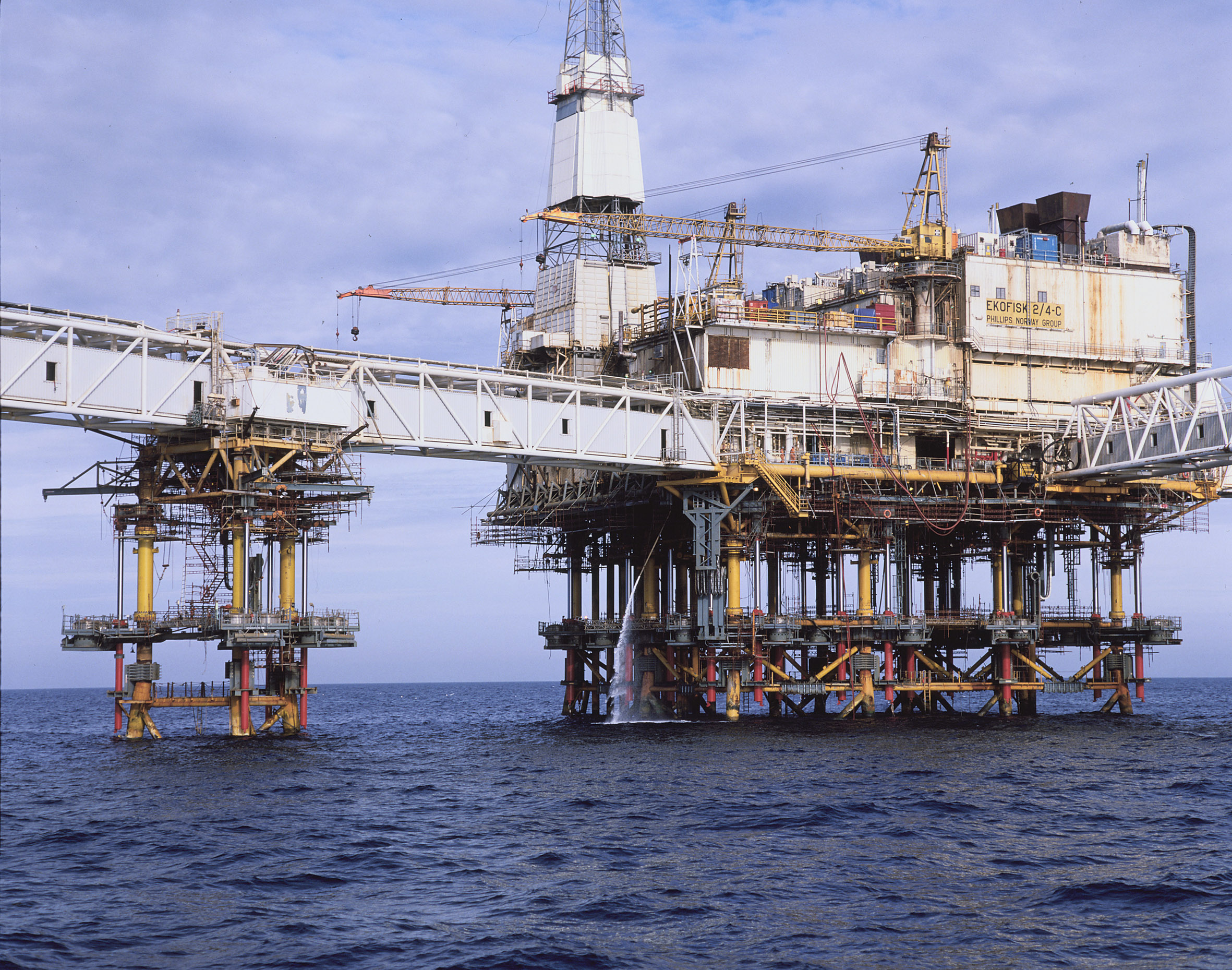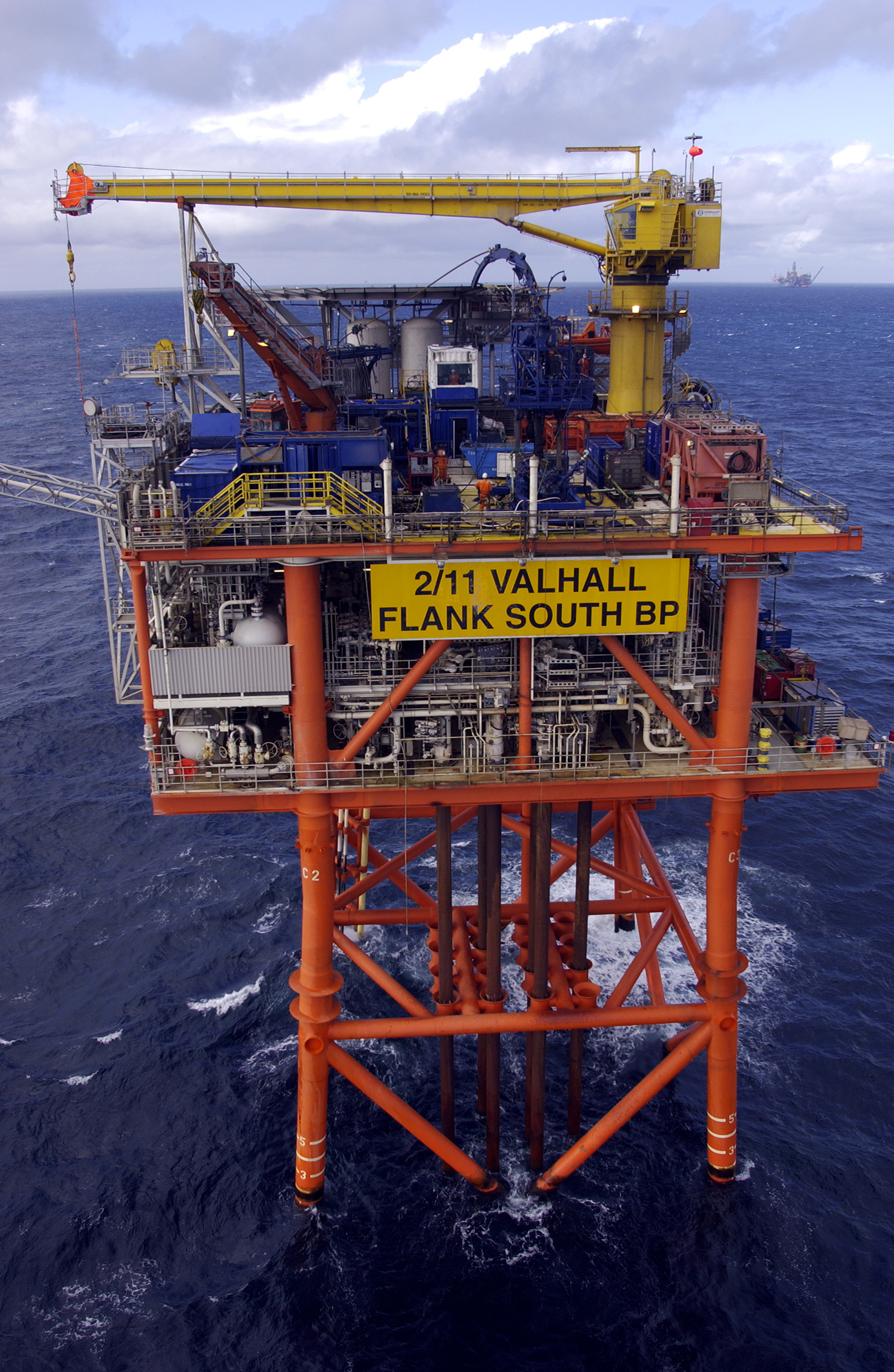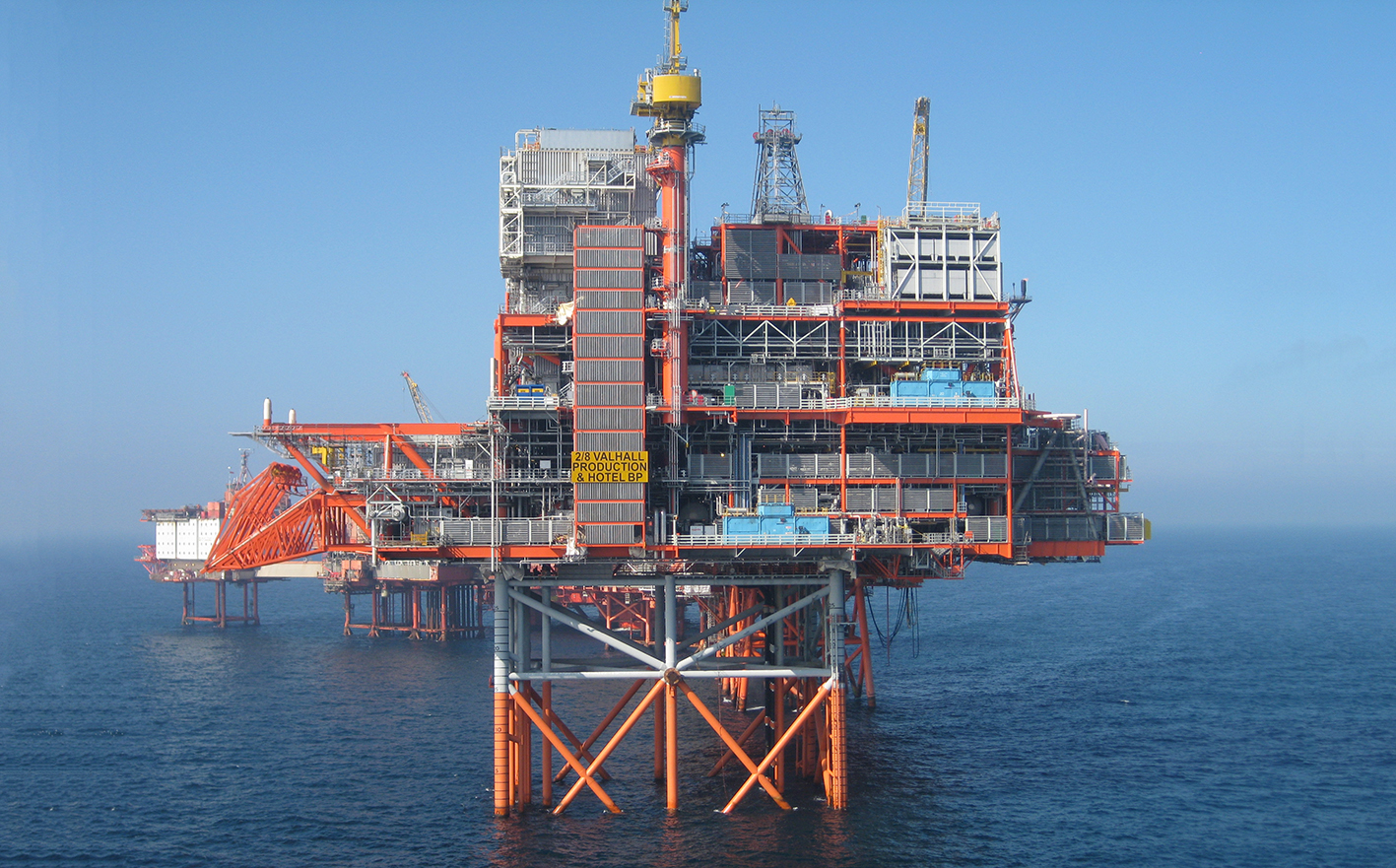Measures to combat Valhall subsidence

Norway’s reputable survey company Bloms Oppmåling was hired in the spring of 1986 to obtain the most accurate and reliable measurements of this subsidence on Ekofisk.
Using an early version of the satellite-based global positioning system (GPS) was used, the company was also hired to survey the Statfjord and Valhall fields to be on the safe side.
Seabed conditions on Statfjord, operated at the time by Mobil, were expected to be relatively stable beneath its three giant platforms. The reservoir consisted of solid sandstones, and its pressure had been maintained by water injection.
Greater doubts existed about the status of Amoco-operated Valhall, where the chalk reservoir made the possibility of subsidence more likely.[REMOVE]Fotnote: NTB, 1 October 1985, “Flere felt har tatt satellittmålinger i bruk”.
How much?
Although Valhall’s geology resembles that on Ekofisk, its reservoir is only about 60 metres thick compared with 300 metres for the other field. So subsidence was not expected to be as much of a problem. But measurements conducted in June and November 1987 nevertheless confirmed that the seabed on Valhall had started to subside – perhaps by as much as 40 centimetres per year.
Fortunately, that initial estimate turned out to be excessive. Further measurements in 1988 allowed the estimate of annual subsidence to be reduced to about 25 centimetres.
The Hydrographic Survey of Norway also began to measure the sea level around the platforms by beaming ultraviolet rays at the water and using the reflection time to calculate the distance.
Since subsidence on Valhall was slower than on Ekofisk, its installations were not immediately in the danger zone. It might take 10-15 years before the operator had to do anything. And the field was not expected to continue producing beyond 2005.
The Norwegian Petroleum Directorate (NPD) viewed these developments with concern. All operators on the Norwegian continental shelf (NCS) were ordered to study reservoir size and type in relation to the possibility of subsidence, and what could be achieved by pressure support.[REMOVE]Fotnote: NTB, 29 November 1986, “Valhall synker i samme tempo som Ekofisk”.
 Tiltak når Valhall synker,
Tiltak når Valhall synker,By January 1987, the position for Ekofisk was that the seabed beneath the Ekofisk tank had subsided by 3.8 metres. Operator Phillips had decided to jack up six of the platforms at the field centre by six metres.
This jacking project was calculated to cost roughly NOK 4 billion. Given that the field would probably produce until 2050-60, however, the expenditure was regarded as worthwhile.[REMOVE]Fotnote: NTB, 24 February 1987, “Synkingen avtar på Ekofisk og Valhall”.
A new survey on Valhall in 1993 indicated that the seabed was only subsiding by six to 10 centimetres a year. Since the field came on stream, it had subsided 2.25 metres in all.
That figure would have reached just over four metres by the time the licence expired in 2011, and the freeboard under the cellar decks would still be enough to continue production.[REMOVE]Fotnote: NTB, 10 March 1993, “Valhall synker, men ombygging kan unngås”.
One way to counteract the subsidence would be to initiate water injection in order to maintain pressure in the reservoir formations.
However, such action in the Valhall chalk was considered less appropriate at the time. Gas injection represented another option, but was not properly investigated.[REMOVE]Fotnote: NTB, 29 November 1986, “Valhall synker i samme tempo som Ekofisk”.
Solution in sight
When Valhall came on stream in 1982, the Amoco-Noco group had estimated that the field would produce for about 20 years and yield some 250 million barrels of oil.
These estimates were sharply upgraded at the beginning of the 21st century. By then, BP had taken over as operator after merging with Amoco in 1999.
It wanted to continue developing the field and adopt new technological solutions to extend its producing life. Some of these related to the seabed subsidence.
The new development plans were based on government approval of a water injection project for Valhall in 2000, and an extension of the licence expiry date from 2011 to 2028.
A longer producing life meant something had to be done about the field centre – not least because of the subsidence. Both jacking up the original installations and building new structures were considered.
 Tiltak når Valhall synker,
Tiltak når Valhall synker,BP’s initial plan was to expand Valhall with two unstaffed mini-units positioned at each end of the field. Such flank platforms formed part of the first development plans in 1977, but their design when finally built naturally differed from the way they would have looked in the 1970s.
Each of these jacket-supported structures would provide 16 additional well slots at a cost of NOK 4.2 million.[REMOVE]Fotnote: Aftenposten , 16 August 2001, “Valhallutbygging gir nytt liv til gamle oljefelt”.(See the article on the flank platforms.)
It eventually emerged that water injection would be possible on Valhall after all. That could not only improve recovery but also help to slow subsidence.
The solution chosen was to install a new injection platform (Valhall IP). This fixed steel structure is tied to the existing wellhead platform (Valhall WP) on the field by a bridge.
Installed in 2003, the IP started injecting water in 2004. It has an integrated topside with facilities for power generation and for treating seawater and produced water, as well as the actual injection equipment.
The rig used to drill the injection wells can be skidded on steel beams from the IP to the WP for use there as well. While the WP has 19 well slots, eight injection wells have been drilled from the IP. About 25 000 barrels of water per day are pumped down into the reservoir.[REMOVE]Fotnote: Stavanger Aftenblad , 28 January 2004, “Vannet strømmer på Valhall”.
The total cost of the water injection programme on Valhall was about NOK 7.2 billion – more than NOK 2.7 million over the budget set in the 2000 development and operating plan.
A problem with the piles intended to fix the platform to the seabed accounted for NOK 1 billion of the cost overrun. Changes to the drilling programme, outfitting the wellhead platform and various modifications were responsible for the remainder. (See the separate article on the Valhall injection platform.)
These two projects boosted the recovery factor on Valhall from the original estimate of 14 per cent to 42 per cent. Total output over the field’s producing life was thereby increased by a massive 750 million barrels of oil to reach one billion barrels.
The billions of kroner in cost overruns were accordingly not wasted, and had less of a negative impact than might have been expected.[REMOVE]Fotnote: Bergens Tidende , 23 August 2003, “Valhall-feltet søkk 25 cm i året”.
 Ny plattform – ny prosess, forsidebilde, drift, tiltak når valhall synker,
Ny plattform – ny prosess, forsidebilde, drift, tiltak når valhall synker,Thanks to the subsiding seabed, BP also needed a new process and hotel (HP) platform on Valhall. The choice in 2004 lay between two concepts – either two platforms or one integrated unit.
The licensees ultimately opted for the latter because they decided to secure electricity from land for the platform rather than using gas turbines.
This reduced topside weight as well as offering the benefit that electrically powered rotating machinery like compressors needs much less maintenance than turbines.
Such equipment is also simpler to regulate, which improves plant availability, reduces staffing and permits faster payback. (See the separate article on the new process and hotel platform.)
At that time, BP’s top management had set bold targets for reducing emissions of environmentally harmful gases and chemical discharges.
The company also wanted to use Valhall to demonstrate the way old fields could be operated efficiently and with a high recovery factor.[REMOVE]Fotnote: Teknisk Ukeblad , 1 October 2004, “Elektrisk Valhall-plattform”.
When the combined HP installation became operational in January 2013, seabed subsidence on the field had come so far that the cellar decks on the three existing platforms could be destroyed by a 100-year wave.[REMOVE]Fotnote: Teknisk Ukeblad , 22 April 2005, “Valhall elektrifiseres”. They were thereby not safe to use in all weathers.
The new platform cost NOK 14 billion and will extend Valhall’s producing life by 30 years, compared with a design life of 25 years for the original installations on the field.[REMOVE]Fotnote: Fædrelandsvennen , 23 March 2007, “Valhalls levetid forlenges”.
New changes – Offshore People Strategy and GO4FLife of field seismic system on Valhall